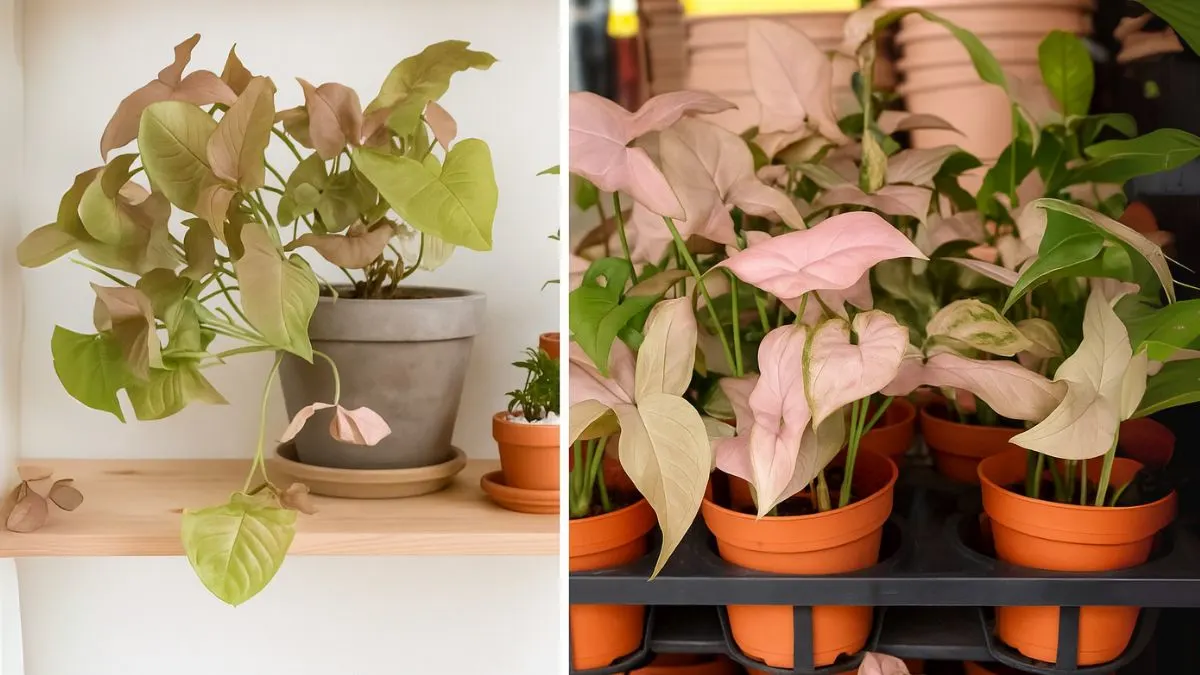If you’re looking for an indoor plant that combines beauty, adaptability, and easy care, look no further than the Syngonium. Often called arrowhead vine, this plant has become a favorite for households across the globe, from small apartments in New York to garden rooms in Toronto.
The charm lies in its low-maintenance nature. Syngonium prefer a medium to bright spot with indirect sunlight, making them perfect for homes that don’t get full sun. Personally, I started with one small pot years ago, and today, I’ve propagated it into multiple plants that bring a lush green vibe to every corner of my home.
In this guide, we’ll cover everything: ideal growing conditions, watering tips, feeding & pest control, and how to propagate them.
Ideal Growing Conditions

-
Light
Grow syngoniums in bright, indirect light for best results. Direct sunlight can scorch the leaves, while too little light can make the plant leggy. That’s why most experts recommend that Syngonium prefer a medium to bright spot with indirect sunlight. If you live in colder regions of Canada or the USA, placing the plant near an east-facing window works wonders.
-
Soil
Syngoniums grow well in a lightweight, well-draining soil mix. A blend of peat moss, perlite, and compost provides the right balance.
-
Watering Tips
Watering is crucial. Syngonium needs moderate light watering, which means you should keep the soil slightly moist but never soggy. Overwatering may cause root rot, while underwatering leads to drooping leaves.
A simple hack: water once the top inch of soil feels dry. I’ve found that in summer, they need water every 4–5 days, while in winter, weekly watering is enough.
-
Feeding and Fertilization
To keep your plant lush and vibrant, fertilize monthly during the growing season. A balanced liquid fertilizer works well. Remember that the best time to sprout new growth is in the spring and summer, when the plant is most active.
Also Read: How to Grow Japanese Spindle Anywhere
Propagation
One of the most exciting aspects of Syngonium is how easy it is to multiply. You can propagate the stems in water or soil mix, and within weeks, you’ll notice new roots forming.
Here’s a quick step-by-step:
- Cut a healthy stem just below a node.
- Place it in water or directly into moist soil.
- Keep it in medium to bright indirect ligh for faster growth.
Personally, I love water propagation because it allows me to watch the roots grow. It’s also a great way to share plants with friends.
Pest Control
While Syngonium are generally hardy, pests like aphids and spider mites can occasionally appear. Regularly wipe the leaves with a damp cloth and spray neem oil if needed. This not only prevents pests but also keeps the leaves looking glossy.
Table: Quick Care Summary for Syngonium
Factor |
Requirement |
Light |
Syngonium prefer a medium to bright spot with indirect sunlight |
Watering |
Syngonium needs moderate light watering – keep soil slightly moist |
Propagation |
You can propagate the stems in water or soil mix |
Fertilizer |
Feed monthly during growing season |
Growth Season |
The best time to sprout new growth is in the spring and summer |
Also Read: Skip Supplements. THIS Food Gives You 32g of Fiber Naturally!
Why Syngonium is a Perfect Choice
- They adapt well to containers and hanging baskets.
- Their foliage comes in shades of green, pink, and even variegated patterns, adding elegance to your interiors.
- Easy propagation means you can build a mini indoor jungle without much expense.
For me, the greatest joy comes from gifting propagated Syngonium plants to friends. They’re always amazed at how quickly these plants adapt and thrive in their homes.
The best time to sprout new growth is in the spring and summer, so if you’ve been waiting to start, now is the perfect time.
Add a Syngonium to your home today and experience how this versatile, low-maintenance plant can instantly transform your space into a fresh, lively, and calming oasis.






